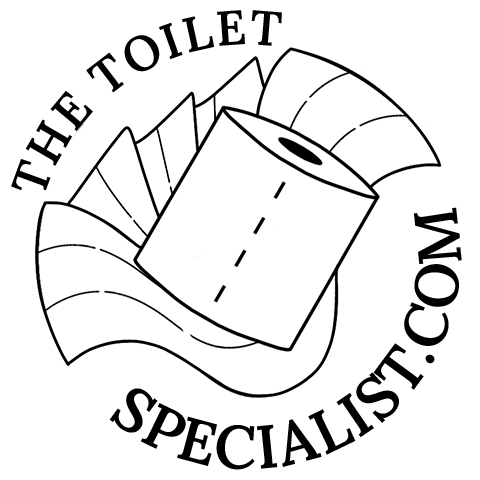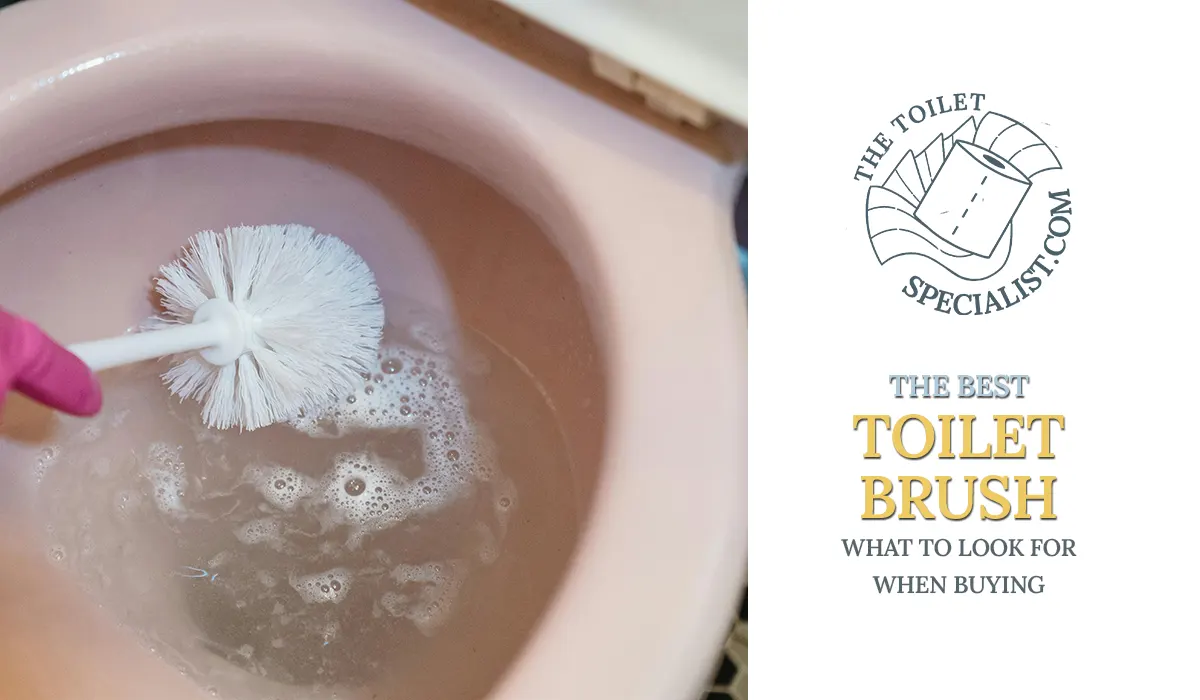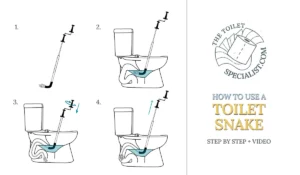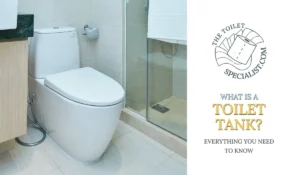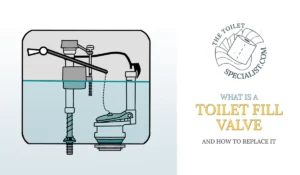The almighty toilet brush. Everyone has one (I might hope), and everyone try to avoid it as much as possible. When buying a toilet brush, consider the following factors:
Look for a brush with durable bristles that can effectively scrub away dirt and stains without scratching the toilet surface. Opt for a brush with an ergonomic handle for comfortable grip and maneuverability. Consider the brush’s design and materials; silicone brushes are often easier to clean and less prone to bacterial buildup compared to traditional bristle brushes.
Plus, don’t forget to choose a brush with a holder or caddy that allows for proper storage and drainage to prevent bacterial growth.
Keep reading to find out which brush to pick, and which one is a huge best seller!
Which type of toilet brush is best?
When it comes to choosing between a plastic bristle toilet brush and a silicone one, the decision often boils down to personal preference and cleaning needs.
Plastic bristle brushes are traditional and widely used, offering sturdy scrubbing power to remove tough stains and buildup. However, they can wear down over time and may harbor bacteria if not cleaned thoroughly. On the other hand, silicone toilet brushes are more hygienic and easier to clean due to their non-porous surface, which prevents bacteria buildup. They are also gentle on toilet surfaces, reducing the risk of scratches or damage.
Next, you can choose from a variety of shapes.
- Traditional Round Brush
- This is the most common type of toilet brush, featuring a round brush head with bristles attached to a handle. It’s versatile and effective for general cleaning purposes.
- Angled Brush
- Angled toilet brushes have a sloped or angled brush head, allowing for easier access to hard-to-reach areas around the toilet bowl, such as under the rim. Some can nearly fit inside the toilet’s P-trap.
- Flat Brush
- Flat toilet brushes have a rectangular or flat brush head, which provides better coverage and scrubbing action, particularly on flat toilet surfaces.
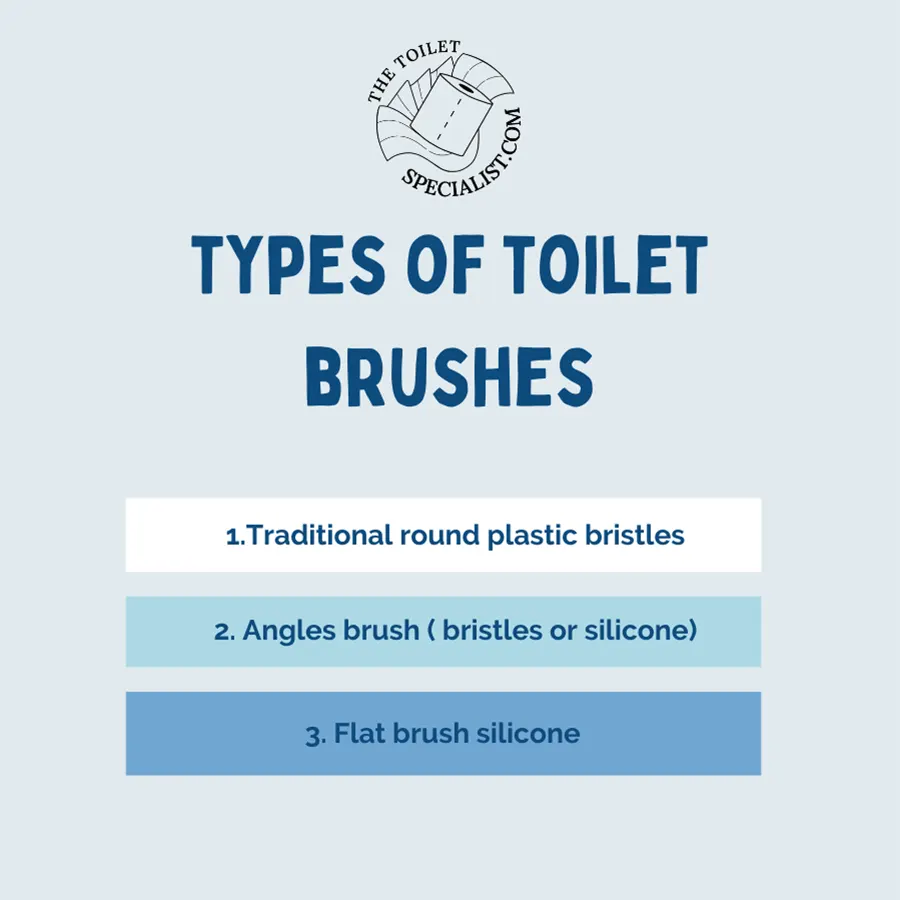
Which one is best?
So, which type of toilet brush is best? It depends on you and your toilet. Some people may find angled brushes or contoured brushes more effective for reaching difficult-to-access areas, such as under the rim of the toilet bowl. Others may prefer flat brushes for their broader coverage or silicone brushes for gentle cleaning.
Everyone knows that thoroughly cleaning your toilet is important. But hopefully more and more people will realize that cleaning their toilet brush is equally important as well.
How unhygienic are toilet brushes?
Did you know that toilet brushes can harbor a surprising amount of bacteria and germs if not cleaned properly?
Studies have shown that toilet brushes can accumulate fecal coliform bacteria, including E. coli, as well as other pathogens that pose health risks. In fact, research conducted by microbiologists found that after just one use, toilet brushes contained an average of 3.5 million bacteria per square inch. This high level of contamination can lead to the spread of harmful bacteria and viruses in the bathroom environment, increasing the risk of infections and illnesses.
Additionally, the design of traditional toilet brushes with bristles can make them difficult to clean thoroughly, allowing bacteria to hide in crevices and corners. Even after cleaning, residual bacteria may remain on the brush, especially if it is not disinfected properly. This makes toilet brushes a potential source of cross-contamination, particularly if they come into contact with other surfaces in the bathroom.
That’s why silicone brushes may be a more hygienic option. However, bristle brushes are found to be easier to handle when cleaning.
What is a more hygienic alternative to a toilet brush?
So, are there any alternatives?
A more hygienic alternative to a traditional toilet brush is a disposable toilet cleaning system, such as pre-moistened cleaning pads or disposable scrubbers. These products are designed for one-time use and are discarded after cleaning, reducing the risk of bacterial buildup and cross-contamination.
Additionally, automatic toilet cleaning systems, such as toilet bowl cleaners that attach to the rim of the toilet, provide ongoing maintenance without the need for manual scrubbing.
How often should you change your toilet brush?
To maintain hygiene, replace your toilet brush every 3-6 months. Over time, bristles wear, reducing effectiveness and risking bacterial buildup. Regular replacement promotes cleanliness and minimizes germ spread.
Of course, this depends on usage frequency and visible wear and tear.
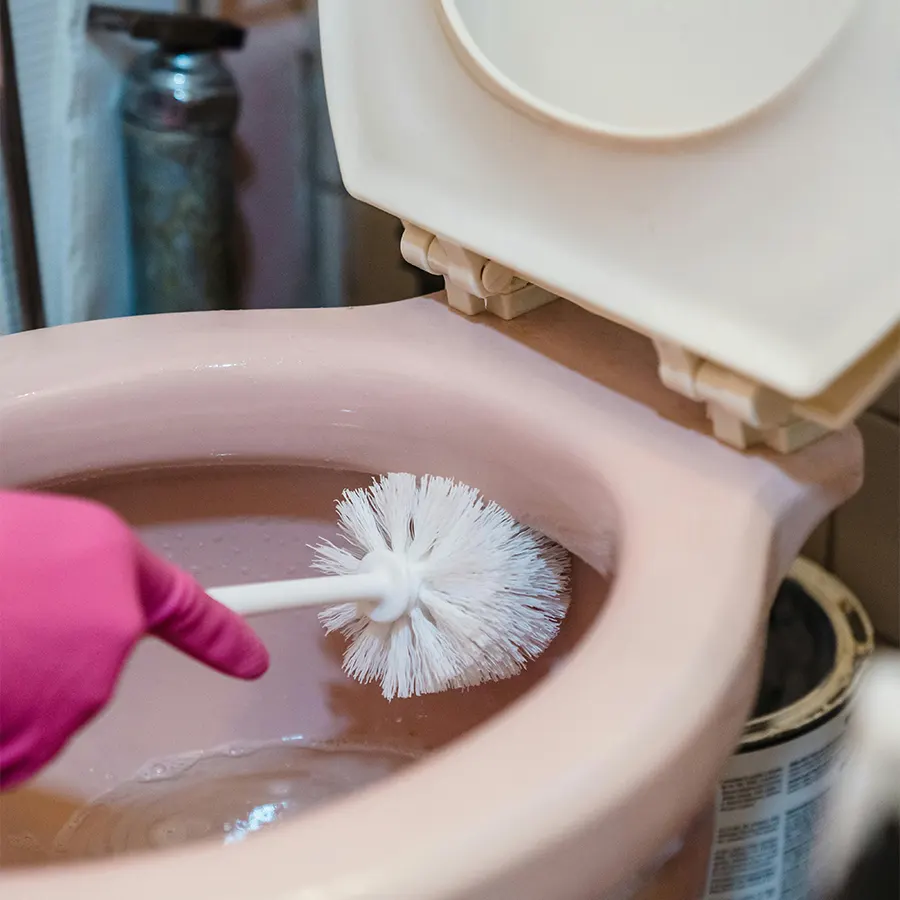
What is the best tool to clean under the toilet rim?
For thorough cleaning under the toilet rim, the best tool is a curved toilet brush or a specialized toilet bowl cleaner with a nozzle designed to reach under the rim. These tools can effectively target and remove accumulated grime and bacteria in hard-to-reach areas. This ensures a deep clean and maintains hygiene standards in your bathroom.
This particular curved brush is a current best seller (sold over 20K times this past month!!).
Is it better to replace or clean a toilet brush?
It’s generally better to replace a toilet brush rather than attempting to clean it thoroughly. Over time, toilet brushes can accumulate bacteria and germs, even with regular cleaning, which may not be completely eliminated. Replacing the brush ensures optimal hygiene and sanitation in your bathroom, providing peace of mind and minimizing the risk of spreading harmful pathogens.
However, sometimes it’s just not possible to replace the toilet brush every 3 months. This can be due to a tight budget. For those, let’s explore how to clean a toilet brush.
How to clean a toilet brush?
Be sure to use gloves, ventilate the area and protect your eyes!
- Prepare Cleaning Solution
- Start by filling a bucket or sink with hot water and add a generous amount of disinfectant cleaner or bleach. (read the manufacturer’s instructions to know what ratio to use). Ensure proper ventilation in the area.
- Soak the Brush
- Submerge the toilet brush completely in the cleaning solution. Allow it to soak for at least 30-45 minutes to loosen any grime, bacteria, and odors.
- Rinse
- Rinse the toilet brush under hot running water to remove the cleaning solution and any loosened dirt. Use gloves to protect your hands during this process. You may want to protect your eyes as well.
- Dry
- Place the brush in between the toilet bowl rim and toilet seat to dry.
- Disinfect
- Once dried, spray the brush with a disinfectant spray. Allow it to sit for a few minutes before rinsing again. Don’t forget to disinfect the handle as well.
- Dry
- Repeat step 4. Ensure it is completely dry before returning it to its holder to prevent mold and mildew growth.
- Clean the Holder
- While the brush dries, clean the holder with hot soapy water and a scrub brush. Rinse thoroughly and allow it to dry completely before placing the brush back inside. For this step you can also use disinfectant.
However, if your brush is way too far gone to be cleaned, you need to replace it.
Disclaimer: TheToiletSpecialist.com is not responsible for any damage caused to your toilet and surroundings by (wrongly) interpreting information found on this site. Please seek custom advice from a professional to evaluate your current situation.
This article may contain affiliate links at no extra cost to you. AF links help support this blog so that it can exist and expand for years to come!
